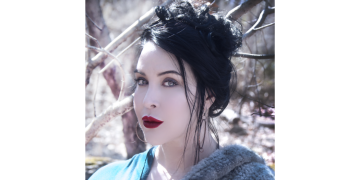A little over 10 years ago, the Nrityagram Dance Ensemble, a superlative exemplar of the classical Indian dance form Odissi, teamed up with the Chitrasena Dance Company, the foremost group specializing in the Kandyan tradition of Sri Lanka. The all-female pairing was delightfully successful in revealing shared roots and contrasting flavors. It also had an intriguing sibling dynamic, with Nrityagram in charge and more mature-seeming even though Chitrasena was founded nearly a half-century before Nrityagram.
Now the two companies have returned with a new show, “Ahuti,” which had its New York premiere at the Joyce Theater on Tuesday. This one promised a twist: men. But, because of injury, only one man from Chitrasena performed, not two. It’s hard to say what difference this made, but what I felt most strongly wasn’t an addition. It was absences.
Nrityagram has gone through a generational shift: Bijayini Satpathy, a longtime star of the Nrityagram troupe, went solo in 2018. And Surupa Sen, the ensemble’s artistic director and choreographer, does not dance in this show, though she is among the onstage musicians and she narrates at the start of each section. Without these two, who together formed one of the great partnerships in dance — and were often called “the goddesses” — the balance of the program changes. It sacrifices some of the sublime and gains in fun.
The five Nrityagram women who perform are certainly no slouches, as the opening number makes clear. It starts with a bang — two dancers smacking their bare feet on the floor as they land in deep squats. Joined by the others, they stay in continual motion, praising Lord Krishna by mimicking his attributes (flute playing, snake killing) in exquisite form and changing formation. The Odissi style here is less sensuous in its signature S-curves, and more rhythmically incisive. A pop star might want to crib some of these moves.
The next selection, “Poornarati,” introduces the two-company blend. A program note invokes the male and female principles of the universe, but there isn’t much difference between the dancing of Kushan Dharmarathna and that of his female Chitrasena colleagues Thaji Dias and Amandi Gomez. The contrast remains the one between Odissi and Kandyan, which is looser and jumpier, sometimes jumping and turning at once. The Chitrasena dancers are also physically different: longer limbed, stretched out, with friendlier and less stylized facial expressions.
Compositionally, “Poornarati” is an advance. (The choreography for “Ahuti” is credited to Sen, with Chitrasena’s artistic director, Heshma Wignaraja, as assistant choreographer.) The two teams keep taking turns, weaving around and through each other, briefly mingling and conjoining, their odd numbers (three and five) causing wonderful asymmetries. The stage space seems to fold intricately, a thrilling effect heightened by the music, which mixes Odissi and Kandyan rhythms with lots of chanting. (Raghunath Panigrahi is credited as music composer for “Ahuti”; Dhaneswar Swain, Presanna Singakkara and Sen as rhythm composers.) A stunning end with divine apparition is followed by an exciting coda with finger cymbals.
The star spots in the program once filled by Sen and Satpathy are now taken by the veteran Nrityagram dancer Pavithra Reddy and Chitrasena’s Dias. Their duet, “Invoking Shiva,” has a hint of competition, with the two women trading off, invoking the god in their respective styles. Dias is more playful, sinuous and springy, but she seems to be working with a much smaller vocabulary. Reddy, while not quite at the level of Sen and Satpathy, is more fearsome, holding one leg in the air and making her body appear to swell, Incredible Hulk-style. She gets the last word.
The final number, “Alap,” is a repeat from the previous collaboration. It’s a rhythmic conversation and a joyful closer, though “Poornarati” surpasses it in complexity and impact. Watching this number 11 years ago, I thought that a mimed game of dance, in which the Nrityagram dancers appear to cheat, might have been a nod to a rigged contest, an imbalance of aesthetic resources and directorial focus. In “Ahuti,” the imbalance is still present, but the weights aren’t the same, because Nrityagram isn’t.
Nrityagram + Chitrasena
Through Sunday at the Joyce Theater; joyce.org.






















